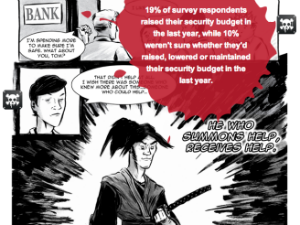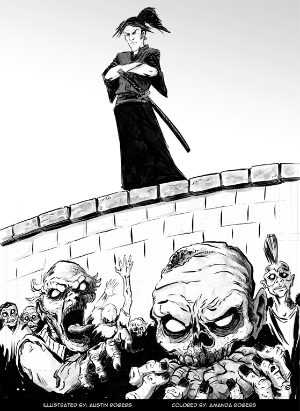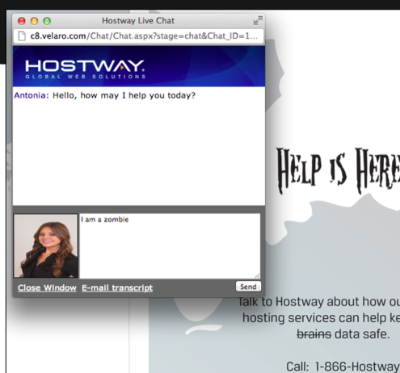 As the popularity of content marketing increases, companies are getting more creative to stand out. The notion of infotainment has begun to enter the realm of otherwise boring and routine marketing communications.
As the popularity of content marketing increases, companies are getting more creative to stand out. The notion of infotainment has begun to enter the realm of otherwise boring and routine marketing communications.
I recently received a heads up on a very clever content marketing object called “The Stalking Dead: A Zombified Infographic-Novel on Cyber Security” from a company called Hostway.
This infographic presents a story of internet security. And zombies. Hover over skull and cross-bone icons and a red splat will appear including survey results. It’s brilliant execution of content in my opinion and I can’t wait to implement our own infographic novel.
As the number of infographics and other media types become more common, a creative effort like this really stands out. There’s just one question: is it optimized?

For every Remarkable Content Object that you invest in, it’s important to consider find-ability, engagement and share-ability to ensure optimimal distribution and reach. Without being accountable to those factors, companies are leaving a lot of money on the table in terms of exposure, value earned and return on effort. This is so common it’s downright scary. Pun intended.
I’ve worked with quite a few companies that want to invest substantially in content and when the question of distribution or amplification comes up, the brand answer is simply to use advertising to drive traffic to the content.
I’m not sure how the Stalking Dead infographic novel was promoted (I was pitched via Twitter) but certainly those who saw it tried to share it. That was not made easy by the graphic itself since there were no sharing buttons or links within the PDF. The landing page does have an embedded ShareThis widget.
Whether social outreach, advertising or email marketing were used, the promotion of a remarkable content object should factor in the ability to amplify increased awareness. That means optimizing the content object for social sharing and discovery as well as for discovery through search.
At the moment I am writing this blog post, a search on Google for “Stalking Dead” or “infographic novel” doesn’t include this excellent content object in the top 10 search results. More importantly, the overall topic “internet risk management” doesn’t show the company or the infographic either. Those are huge opportunities to extend the reach to an audience that is actively looking. The good news is that a few on-page modifications, a meaningful array of qualitative links and social shares could fix this.
 Besides a very clever infographic and method of sharing survey results, Hostway did A LOT of things right, including a great job of making this content object a direct engagement opportunity. The achieved this by linking the infographic file to a livechat application. That means when you arrive on the landing page or click on the infographic itself, a livechat window appears asking if you have any questions about secure hosting services.
Besides a very clever infographic and method of sharing survey results, Hostway did A LOT of things right, including a great job of making this content object a direct engagement opportunity. The achieved this by linking the infographic file to a livechat application. That means when you arrive on the landing page or click on the infographic itself, a livechat window appears asking if you have any questions about secure hosting services.
This is something a lot of companies miss by exclusively focusing on the creative and social media aspets of a content object and not including the ability to monetize. It’s a fine line to walk between creative and promotional, but don’t forget that we’re creating these content objects to attract business, not win design or social media awards. With smart, creative planning and execution, I know you can do both and leave customers wanting more.
This is a great creative example of a remarkable content object – well done Hostway. Be sure to check it out.
At the same time, I salivate like a Zombie looking at a fresh human when I think of what I could do by putting this into a hub and spoke amplification model that further optimizes for findability through search and social.
What are some of your favorite examples of great content object design and clever implementation? Were they optimized?


